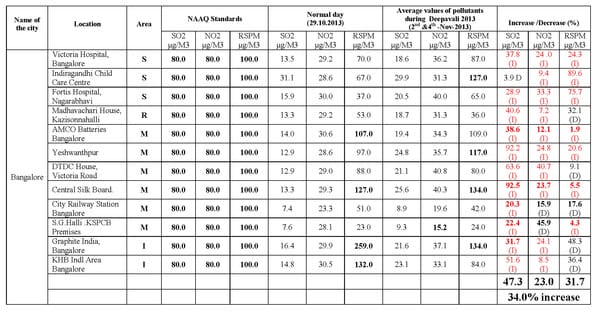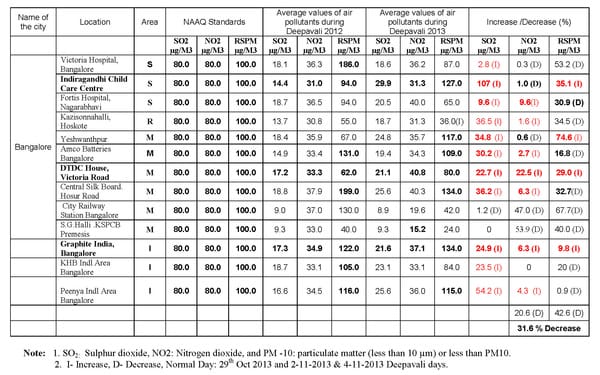Karnataka State Pollution Control Board has monitored the ambient air quality using continuous ambient air quality monitoring system at two locations and manual monitoring stations at 13 locations (11 manual stations and 2 Continuous Ambient Air Quality Monitoring Stations [CAAQMS]) in Bangalore city on occasion of Deepavali festival 2013. To see the impact of bursting of crackers etc. on air quality, round-the-clock (24 Hourly) air quality monitoring was carried out.
- The measured SO2 and NO2 values during normal days (29.10.2013) and Deepavali days (2nd and 4th Nov-2013) have not exceeded the National limits (SO2: 80 µg/M3 and NO2: 80 µg/M3). However there is an increase by 47% and 23% respectively.
- The measured Particulate Matter (PM-10) has exceeded the National Limit at four spots before Deepavali and at five spots during Deepavali.
- However, there is an increase of 34.0 % pollutants level during Deepavali
- The air quality monitoring data during Deepavali 2013 has compared with last year Deepavali 2012. It is observed that there is an decrease by 32% when compare to Deepavali 2012 data .
The ambient air quality data is as follows.
Status of ambient air quality monitored using CAAQMS in Bangalore city during Deepavali 2013 (All values are in microgram per cubic meter)
Click on the image to view fullsize.
Comparison of ambient air quality during the year 2012 and 2013 Deepavali Festival in Bangalore city
(All values are in microgram per cubic meter),
Click on the image to view fullsize.

